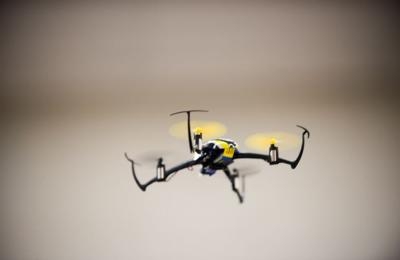Tue, May 12, 2015
'New Technology Poses Risks' That Must Be Addressed, Organization Says
The European Cockpit Association has released a position paper outlining what it says are "key regulatory standards" to ensure that UAVs and manned aircraft can safely coexist in European airspace.

According to the ECA, the technology and abilities of Remotely Piloted Aircraft Systems (RPAS) are changing fast and the commercial demand to integrate the systems in the airspace is enormous. The commercial advantages and possibilities of RPAS seem almost unlimited. And because of decreasing costs - the recreational user will be a new actor in the airspace. But this new technology poses risks that must be on the radar screen of manufacturers, users and regulators. In a new position paper, ECA outlines a number of prerequisites for the safe integration of light RPAS, often referred to as ‘toys’, into Europe’s low level airspace.
“A broad misconception is that small drones are harmless ‘toys’ flying at low level. However, RPAS, even light ones below 1 kg, can cause significant or even catastrophic damage to e.g. helicopters in case of a collision as helicopters have a number of vulnerable, critical components, such as the tail rotor or main rotor head,” says ECA President Dirk Polloczek. “Even below 500 feet there is a lot of air traffic, such as air ambulances, police or fire fighting. The same applies to the airspace next to airports, with a frequent incoming and outgoing traffic. Contrary to scheduled airline flights, most of the low level air traffic (e.g. police or air ambulances) are not predictable in time and place, but all are subjected to strict air operations rules. So should RPAS be.”
At this moment recommendations for worldwide requirements for RPAS are developed for example by the Joint Authorities for Rulemaking on Unmanned Systems (JARUS). In Europe, the National Civil Aviation Authorities are currently responsible for RPAS operations with a weight of 150 kg or less, which leads to diverging rules from state to state. With the ‘Riga Declaration’, signed by the European Commission and various stakeholders, and the European Aviation Safety Agency’s proposed ‘Concept of Operations’ Europe has taken a decisive step to open its skies for RPAS.
This is why ECA has outlined a set of key regulatory standards to ensure safety in lower level airspace when RPAS are integrated with other traffic. Some of these are:
- Introduction of approved automatic detection and avoidance equipment on RPAS;
- Placing responsibility to see and avoid manned aircraft on the pilot of the RPAS;
- Training and licensing of RPAS-pilots in a way that knowledge and skills – but also awareness and airmanship – are on a comparable level as manned aircraft pilots;
- Compulsory registration for all RPAS;
- Informing the public about the dangers of recreational RPAS (DOs and DON’Ts).

“We face an immense challenge to safely integrate RPAS,” says Philip von Schöppenthau, ECA Secretary General. “The Riga Declaration spells out important principles. But we need to be meticulous in our assessment and way forward when it comes to the details. We simply cannot afford to fail. This would be disastrous both for the RPAS industry and for aviation safety. As such we hope that Europe’s future drone rules will be a leading example worldwide when it comes to safety and security.”
(Image from file)
More News
Airport Rotating Beacon A visual NAVAID operated at many airports. At civil airports, alternating white and green flashes indicate the location of the airport. At military airports>[...]
Aero Linx: Fly for the Culture Fly For the Culture, Inc. is a 501(c)(3) non-profit organization that serves young people interested in pursuing professions in the aviation industry>[...]
Klyde Is Having Some Issues Comprehending The Fed's Priorities FMI: www.klydemorris.com>[...]
Also: Viasat-uAvionix, UL94 Fuel Investigation, AF Materiel Command, NTSB Safety Alert Norges Luftsportforbund chose Aura Aero's little 2-seater in electric trim for their next gli>[...]
Also: EP Systems' Battery, Boeing SAF, Repeat TBM 960 Order, Japan Coast Guard H225 Buy Despite nearly 100 complaints totaling millions of dollars of potential fraud, combined with>[...]
 ANN's Daily Aero-Term (04.25.24): Airport Rotating Beacon
ANN's Daily Aero-Term (04.25.24): Airport Rotating Beacon ANN's Daily Aero-Linx (04.25.24)
ANN's Daily Aero-Linx (04.25.24) Klyde Morris (04.22.24)
Klyde Morris (04.22.24) Airborne 04.24.24: INTEGRAL E, Elixir USA, M700 RVSM
Airborne 04.24.24: INTEGRAL E, Elixir USA, M700 RVSM Airborne 04.22.24: Rotor X Worsens, Airport Fees 4 FNB?, USMC Drone Pilot
Airborne 04.22.24: Rotor X Worsens, Airport Fees 4 FNB?, USMC Drone Pilot




